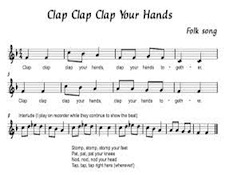It’s the time of year for saving money!
In our modern age of smartphones and smartphone apps, it’s easy for any audiophile to carry around a complete set of audio tests in the palm of their hand. I’ve written in the past about the AudioTools test suite, and Genelec’s “Speaker Angle” applications, but what if you don’t have your smartphone handy or the environment isn’t quiet enough to run TEF sweeps and frequency response curves? Well, you have two essential tools at your disposal that you’ll never be without – your voice and your hands.
 At the 2014 Axpona Show I had ample opportunity to use both of my built-in test devices to determine why some rooms at the show sounded less than ideal. And how do you use your voice and hands to determine whether a room has serious sonic issues? Talk and clap.
At the 2014 Axpona Show I had ample opportunity to use both of my built-in test devices to determine why some rooms at the show sounded less than ideal. And how do you use your voice and hands to determine whether a room has serious sonic issues? Talk and clap.
When I walk into a room at an audio show, or any listening room that I’m unfamiliar with the first thing I do is open my mouth and talk, not because I love the sound of my own voice, but because listening to my voice tells me a lot about the sonic nature of the room. If there’s no one else around to have me committed I often spit out some percussive rhyme such as “Peter Picked a Peck of Picked Pepper” or “Lama Lama Fa Fa Fa” loudly enough so that I can hear if there are echoes or harmonic alterations to the timbre of my voice. But even talking with someone at normal levels can tell you a lot about a room, all you have to do is listen – how is it altering the sound and harmonic balance of your voice?
 Another way I “analyze” rooms is to clap my hands. If a room has any flutter echo the fast transients of one hand striking the other will give me all the information I need to determine if a room has any pernicious echoes or midrange resonances.
Another way I “analyze” rooms is to clap my hands. If a room has any flutter echo the fast transients of one hand striking the other will give me all the information I need to determine if a room has any pernicious echoes or midrange resonances.
At Axpona 2014 many of the rooms on the 12th floor of the Westin O’Hare (which had higher ceilings in the rooms than on the 3rd and 4th floors) had serious flutter echo issues, which not only smeared time-based musical information but also added additional upper midrange energy to the music. Given that attaching sound absorbers around the outer edges of the ceiling or covering an entire long wall with absorption material was not a hotel-approved option, exhibitors had to live with the flutter echo in many of the 12th floor rooms.
So how does your listening room sound? With some clapping and talking you should be able to tell if it’s adding reverberance or altering your music’s harmonic balance in less than 30 seconds, which makes your hands and voice pretty darned efficient testing devices.





